Drugs, radical treatment and the unending grief of younger onset dementia
Luke and Lisa were a picture-perfect couple busy with work and three kids, and looking forward to their future. Then Lisa started forgetting things.
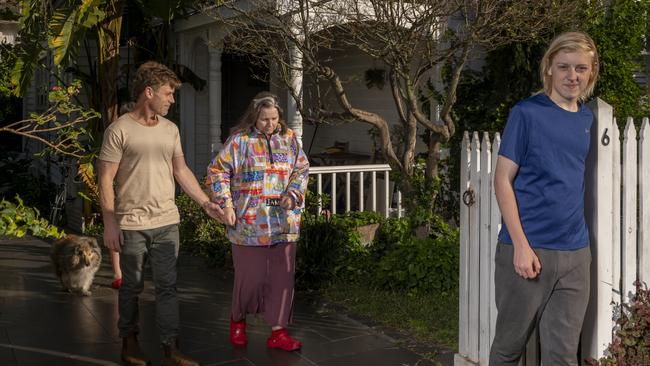
Behind the white picket fence of a weatherboard home in Hawthorn in Melbourne’s inner east, Luke Campbell was asleep on his front deck. Over the previous few days, he’d barely eaten or managed to cook for his three children. His partner, Lisa Padgham, quietly crept around him, opened the gate, and set off running down the street to the local shop to buy cheese.
“I would find cheese stashed everywhere in the house. Cheese in her wardrobe, in the bathroom, outside in the garden,” Luke recalls. “One day she went to the shop 26 times over 24 hours to get cheese.”
Throughout 2021, amid Melbourne’s harsh Covid lockdowns, family life at the Campbell-Padgham residence had steadily become unbearable. Luke and their three children, Rawson, Harvey and Lacey (now aged 15, 14 and 13 respectively), approached a point where they could no longer live under one roof with their beloved – but by this stage, very unwell – partner and mother. It was not simply an untenable situation. It was now a dangerous one.
“I didn’t feel I could keep Lisa safe anymore. I couldn’t stop her running to the shops. I remember another day I went to the bathroom and I said, ‘Kids, just give me a minute, make sure Mum doesn’t run off’,” he recalls. “I came out and I heard the gate clink, and she was literally running up the street. I ran after her saying, ‘We don’t need any more cheese’. We live near a busy street, and she’d just run. I didn’t want to be picking her up off the side of the street.”
Two years earlier, Luke had thought his 16-year relationship with the once sporty and vivacious Lisa was over. “The relationship had completely broken down,” he says. At the time, he’d stopped working full-time in the banking and finance industry and suddenly found himself spending more time in the family home. It was only then that he became aware of little things with Lisa. Little things that didn’t add up. Little things that became big, worrisome things.
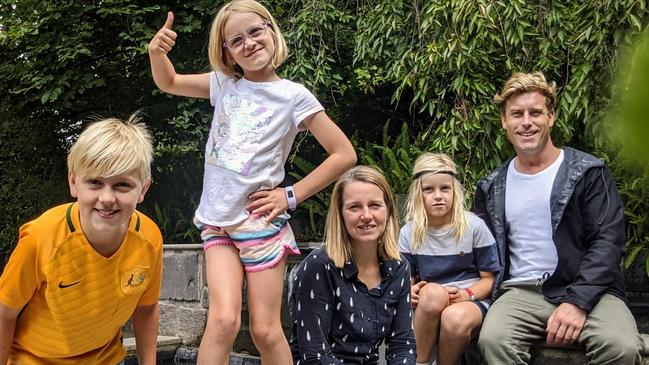
“She’d been a full-time stay-at-home mum and wanted to return to work,” he says. “But when she did she said she felt like something was wrong with her brain. We laughed about it. She’d spent five years at home with the kids.”
Lisa had always kept a busy and active life, playing tennis, golf and badminton. She was a keen runner and dancer, then suddenly…
“She didn’t want to go places or hang out with the kids. She’d get home from work at four and lie on the couch. She’d go to bed at seven,” he recalls. “I just didn’t understand it.”
The couple would row, then afterwards they would discuss their marital problems and vow to take steps to improve the relationship. But when Lisa woke the next morning, she would shower and leave for work at the Victorian Department of Justice as if no row had ever occurred. She would return that evening with no recollection of the previous night’s discussion.
“I thought I was going crazy,” Luke says.
What on Earth was going on? Did Lisa have a brain tumour? Was it menopause? Stress? Anxiety? Or was this what a relationship naturally breaking down felt like? Luke says he considered every conceivable outcome.
The one thing he didn’t consider was that his partner, then aged 47, had dementia.
Younger onset dementia accounts for betweenfive and 10 per cent of all dementia diagnoses in Australia. It is the term typically given to those living with the condition who are aged under 65. According to Dementia Australia, in 2023 there were 28,650 Australians living with younger onset dementia as we come to understand more about the disease. The figure is expected to rise steadily over the next three decades to more than 42,000 diagnosed by the year 2058. There is no cure for younger onset dementia, or any form of dementia for that matter. Researchers don’t know why some people get the disease at a younger age than others, but risk factors include a family history of the disease.
Since 2015, Associate Professor Samantha Loi, from the Neuropsychiatry Centre at the Royal Melbourne Hospital and Department of Psychiatry at the University of Melbourne, has devoted her career to the treatment of patients with younger onset dementia. She is familiar with heartbreaking stories such as Lisa’s.
“These people are young,” Loi says. At age 46, she often grapples with the fact her patients are the same age as she is. “This could be my partner, this could be my sister,” she says. “I am at the same stage of my life [as they are]. I am busy looking after my children and my older parents and working. I too can be inattentive and absent-minded.”


It is precisely because of these typical everyday stresses that Loi says the treatment and care of younger dementia patients is often hampered by delays in their diagnosis. She says for younger people, dementia symptoms can be varied and range from depression and anxiety to problems with visual processing, mood changes, or getting “stuck” on certain ideas.
“They are vague symptoms that could be common for people in their forties or fifties who are very busy. The GP might just suggest counselling or taking time off. But the symptoms will persist. The people around them will start to get frustrated and wonder, ‘What is going on?’ I have met more than a few couples and families who were on the brink of separation. The perception [in those families] was that [the patient] was having some kind of major midlife crisis and had made little attempt to change or seek help. It’s not uncommon for couples to separate prior to a diagnosis.” She says Australians in rural and regional areas, as well as those from non-English speaking backgrounds, are even more vulnerable to delays in diagnosis, which compounds stress and anxiety in the home, as well as for the person with the disease.
“The impact [of a diagnosis] on the family is huge, and very different compared with older-onset dementia,” Loi says. “The kids may be young. It’s very hard to explain these concepts to them. Dementia is not static; the symptoms may change and get worse.
“Families need to get used to the person with dementia’s symptoms, but then the symptoms get worse, and families must make another adjustment. They have to change their expectations almost constantly.”
When the diagnosis does finally come, and the shock eventually subsides, she says, “there are so many different emotions – shock, anger, depression, guilt for having blamed the person and for not having picked it up earlier”. When people finally make it to the Neuropsychiatry Centre, Loi says her team has to make up for the “lost” time.
Liz Grigg knows all about losing time. Each week she must adjust to the rapid decline of her husband Darren, 60, who was diagnosed with dementia in 2019 at the age of 55. “I have to be aware of where he is and what he is doing. It’s like dealing with a toddler with an attitude,” she explains.
The couple, from Upper Beaconsfield in Victoria, have three children together – Mathew, Samantha and Ashley, all now in their twenties. Liz says she and Darren had planned to be enjoying more time together at this stage of their lives, with their kids making their way as adults. “It’s a devastation. The last child is going through private school, and you finally get cash behind you to do the things you’d put off and none of that is going to happen,” she says through tears.
“I am his carer, I am not his wife. I look after him 24/7 and I make sure he has food and water and attention and is supervised. I don’t get a conversation out of him. If it’s just him and me there’s no conversation. He does yes and no. You can’t have an in-depth conversation about politics or anything. He won’t see weddings or babies. For the kids, it’s been difficult.”
Samantha and Ashley have moved out of home, escaping the tumultuous existence of living with their father as his condition declines. “Their Dad is not there anymore,” Liz says succinctly.
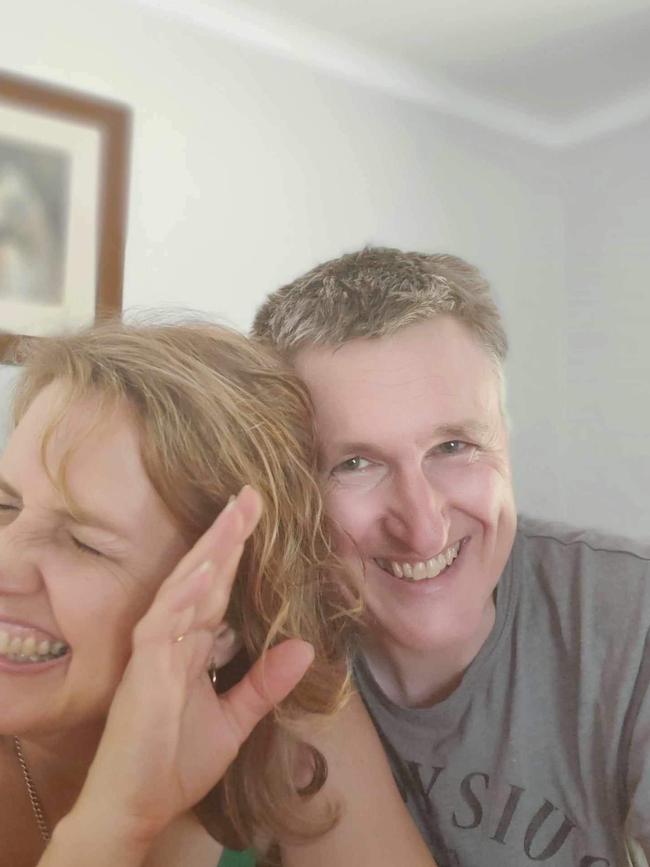
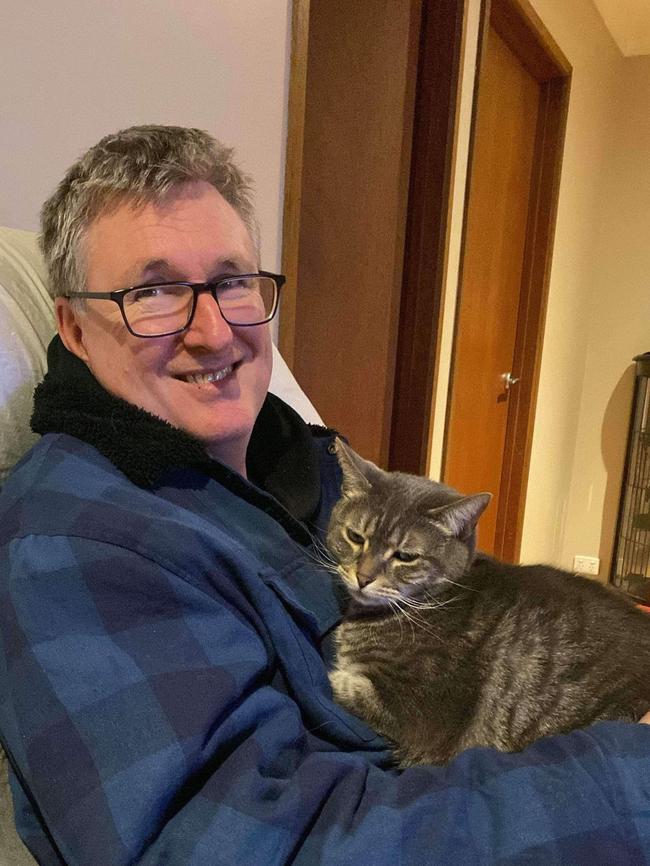
Darren loved to play golf and go four-wheel driving. He and Liz had plans to drive around Australia. But he can no longer drive, or join his mates on the golf course. The former mechanical design draftsman has a shed full of tools he can no longer use.
It was about two and a half years before his diagnosis that Liz says she noticed Darren’s personality beginning to change. “If he dropped something he’d fly off the handle,” she says. Their GP initially referred Darren to a private psychologist who spent six months eliminating various conditions, including depression.
“I was pushing back to the GP, saying his personality wasn’t right and his reactions were extreme,” Liz says. Darren’s dementia went undiagnosed for an entire year. After sitting cognitive testing, he was finally referred to Loi.
The experiences of both Lisa and Darren are not atypical, and their stories – along with those of hundreds of others – have informed Loi’s focus on improving the ability of health professionals to diagnose younger onset dementia.
Raising awareness of the symptoms is one tactic. Loi says health professionals must be alert to early “red flags” that could help to identify when patients should be referred to a specialist. These could include symptoms not improving as they should, a family history of dementia at a young age, or neurological symptoms such as numbness, weakness, or persistent headaches.
The other way Loi’s team is focused on early detection is by developing a blood test that could distinguish between psychiatric disorders such as depression and anxiety, and dementia. The test looks for the presence of neurofilament light protein (NfL), which is contained in the axons of the brain’s neurons. NfL is released when there is any injury to axons. If the test records high concentrations of NfL, it’s a telltale sign of axonal injury, which suggests neuroinflammatory disorders or dementia.
Currently, doctors are required to order a lumbar puncture and collect cerebrospinal fluid to check for elevated NfL levels.
“A blood test which could measure the NfL levels could be done by a GP, and it may be significantly cheaper than detailed cognitive testing and brain scans … It will reduce diagnostic delay and other unnecessary testing,” Loi points out. She says the test is 90 per cent accurate in distinguishing between dementia and psychiatric disorders in younger people. However, more testing and a final approval from the National Association of Testing Authorities is required before it can be rolled out nationally. If, as Loi hopes, this breakthrough blood test can ensure prompt and early diagnosis in the future, the question remains: what kind of treatments exist for patients when they receive the terrible news that they have dementia?
Dementia is a problem for Australia which, due to our ageing population, is set to grow. Today, between 400,000 and 500,000 people are living with a form of dementia, and by mid-century that number is expected to rise to one million people. Treatment and care will come at an economic cost of 2 to 3 per cent of GDP. At projected rates, the aged care workforce will need to triple by 2050, and 500 new beds for dementia-related care will be required per month for the next 40 years. It is the second leading cause of death in Australia, and the leading cause of death for women.
Alzheimer’s is the most common type of dementia, accounting for 50-70 per cent of patients. Most younger onset dementia cases are caused by Alzheimer’s or frontotemporal dementia (FTD). Researchers have found FTD is more prevalent in the young, and as it tends to progress more quickly the prognosis for younger patients can be more confronting. About one in 10 cases of younger onset FTD are caused by a directly inherited gene. In most cases, the cause is unknown but is likely a combination of lifestyle, environment and genetics.
Both Alzheimer’s and FTD, as well as many other types of dementia, are caused by a build-up in the brain of the toxic amyloid beta protein, which accumulates over time and causes damage to nerve cells. The other major type of dementia in younger people is vascular dementia, which results from damage to the circulation in the brain, and from strokes.
Experts say the “holy grail” of dementia research is to obtain a disease-modifying therapy to slow the disease progression and allow patients to retain their memory and cognitive function for much longer.
The University of NSW Scientia Professor of Ageing and Mental Health and co-director of the Centre for Healthy Brain Ageing, Henry Brodaty, is a leader in dementia research and a past chairman of Alzheimer’s Disease International.
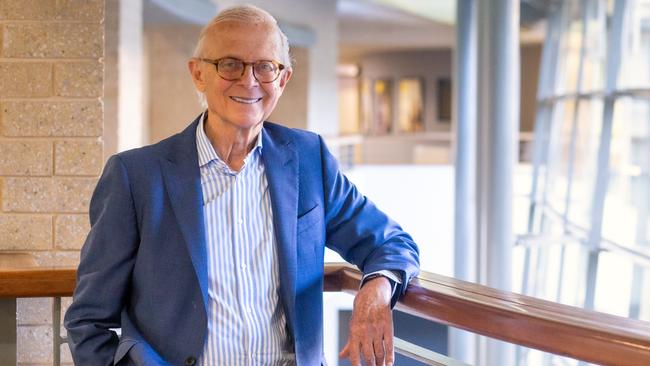
While excited about new developments in early diagnosis and treatment of the disease, Brodaty is less optimistic about finding a cure. “We may devise ways of stopping Alzheimer’s in its tracks,” he says, “but we will likely need to use more than one drug in combination, as we do for many other health conditions.”
He points to promising drug treatments such as Lecanemab, recently approved in the US and the UK, which harness monoclonal antibodies against the amyloid beta protein. These therapies have delayed dementia’s effects by about 27 per cent over 18 months, and it’s hoped they could stop a patient’s symptoms if administered early enough. Research is still underway, and Brodaty cautions that currently these drugs are not easy to access. They’re expensive, at upwards of $40,000 a year, and must be administered by intravenous infusion every two weeks.
While breakthroughs in dementia treatment have ebbed and flowed, Brodaty says over the past decade researchers have made “definite” progress in the drug treatment of Alzheimer’s through Lecanemab, and that trials of new drugs to treat FTD are also underway. Important strides are being made in the area of prevention, such as UNSW’s Maintain Your Brain trial which showed over three years an ability to delay the onset of cognitive decline. Improvements are also linked to funding, he says. A 2014 Abbott Government pledge to tip $200 million over five years into dementia research funded the Maintain Your Brain trial, as well as important work by the Australian Dementia Network to improve diagnostic practices.
Professor Jürgen Götz, director of the Clem Jones Centre for Ageing and Dementia Research at the University of Queensland’s Queensland Brain Institute, agrees a multitude of treatments are likely to hold the key to delaying the advance of dementia, and his research holds the hopes of many younger onset dementia patients and Alzheimer’s patients.
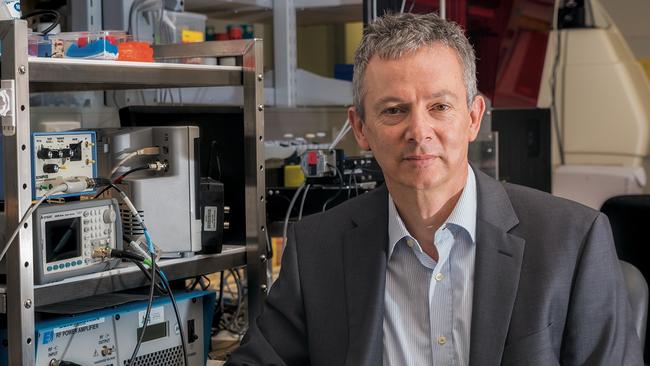
In December 2022, UQ announced it would begin a 12-month human trial of a “world-leading” approach to slowing Alzheimer’s using non-invasive ultrasound technology. It marks a radical departure from the use of drugs alone; Götz, who has worked in dementia research for almost 30 years, sees a future in which drug treatment and ultrasound technology work hand in hand. “This will ultimately help in providing a personalised way of treating the disease in a given patient,” he explains of the breakthrough, which has been ten years in the making and has cost more than $30 million to develop. “My hope is that therapeutic focused ultrasound will become an approved treatment for Alzheimer’s and other brain diseases, whether on its own or combined with drugs.”
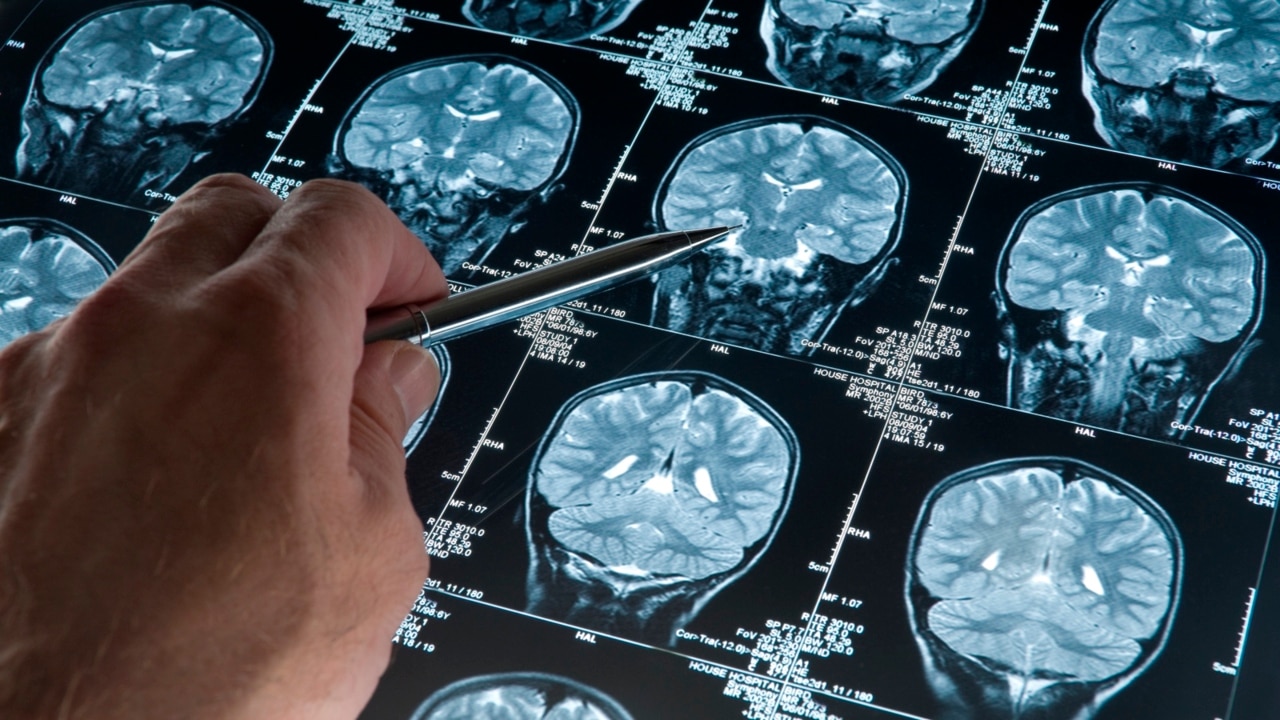
UQ’s research has found in mouse models a significant improvement in memory without having to clear amyloid plaques, says Dr Gerhard Leinenga from the Queensland Brain Institute. Amyloid plaques are clumps of amyloid beta protein that block communication between brain cells, which leads to memory loss and other symptoms of Alzheimer’s.
“Ultrasound on its own has direct effects on the neurons, with increased plasticity and improved brain networks,” he explains. “By increasing the plasticity of neurons, it can compensate for the presence of toxic amyloid that is present in high levels in patients that have dementia at a younger age.”
The research team is also looking at a type of frontotemporal dementia, tauopathy, which is also common in younger onset dementia patients. Ultrasound may be able to reduce the levels of a protein called tau and improve neuronal communication. Small-scale clinical trials are underway and, in the future, large-scale trials will be carried out specifically to assess the efficacy of ultrasound in reducing Alzheimer’s symptoms.
Luke Campbell can remember a flurry of phone calls Lisa made to him sometime in 2015. “I was about to jump on a plane for work and she rang and had forgotten I was going to Canberra,” he says. “I hung up and five minutes later she called again, asking me to get milk.”
This might have been the first sign, he thinks, that she was contending with a serious illness, and not just the brain fog of a busy life.
Over the next four years, her symptoms became more pronounced; he finally realised he had to get Lisa to a doctor. “The next time something significant came up where Lisa was able to realise she’d made a mistake, and that something was wrong with her memory – it might have been as simple as bringing home a bag of groceries with multiple things that she’d already bought – we went straight to the doctor while it was still fresh, otherwise I wasn’t able to get her there,” he says.
She was referred to a memory clinic for scans and cognitive tests. Luke sat in shock as Lisa, who had been fluent in Japanese and had risen to a senior role in the public service which required her to brief government ministers, could no longer perform basic tasks such as writing a sentence or drawing a clock face.
In February 2020, Lisa was diagnosed with younger onset dementia. By the end of 2021, a burned-out Luke called Dementia Australia for advice about what to do next for her.
“Young onset is so destructive – I had watched her deconstruct as a person,” he says, unable to hold back the tears.
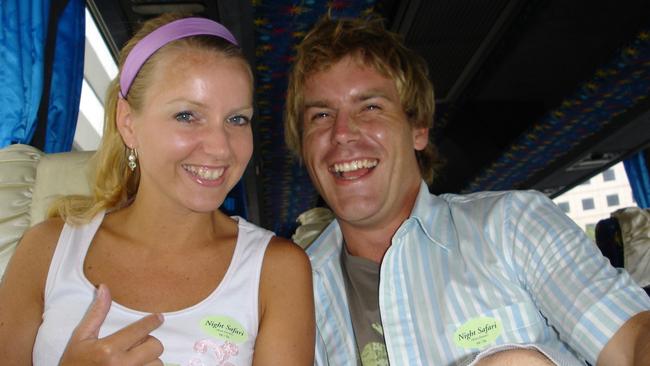
There was no way, he explains, to shield their children from Lisa’s growing paranoia, aggression, hoarding and obsessiveness. “Living with dementia can be scary for the kids – they don’t know what’s going to come next. You have a full-grown adult telling you a version of events that an eight-year-old knows not to be true. How do you resolve that?”
The operator recommended he call an ambulance.
At first, Lisa’s family placed her in an aged care facility. With the reserves of energy he had left, Luke fought to find a more appropriate solution. His battle paid off and, thanks to the NDIS, Lisa, now 51, is currently living in a two-bedroom apartment near the family home. She has two carers rotating shifts to provide her with 24-hour care.
“Sitting here almost four years later, our relationship has changed a lot,” says Luke, 43. “I am Lisa’s care partner. I think of her like my best friend. That is how I can still play a role in her life. She is severely disabled, with advanced stages of dementia.
“It’s a torturous existence. I lost my life partner. The kids have lost their mum. They have watched pieces of their mum fall away. In a way, she has already gone. It’s been an extended period of anticipatory grief.
“Sharing my story helps me, but my intent is to help others navigating the journey.”
Dementia in younger patients is largely an “invisible illness”, Luke says. It was always hard for the wider community to understand what Lisa and her family were contending with. He hopes his experience will help guide other families to the suite of support services that have become available in recent years.
Heartbreakingly, Luke knows that the millions of dollars being poured into dementia research, advances in drug therapy and the promises of ultrasound therapy will all come too late for Lisa. “She is here now, and we can still do things with her to make the most of her time,” he says.






To join the conversation, please log in. Don't have an account? Register
Join the conversation, you are commenting as Logout